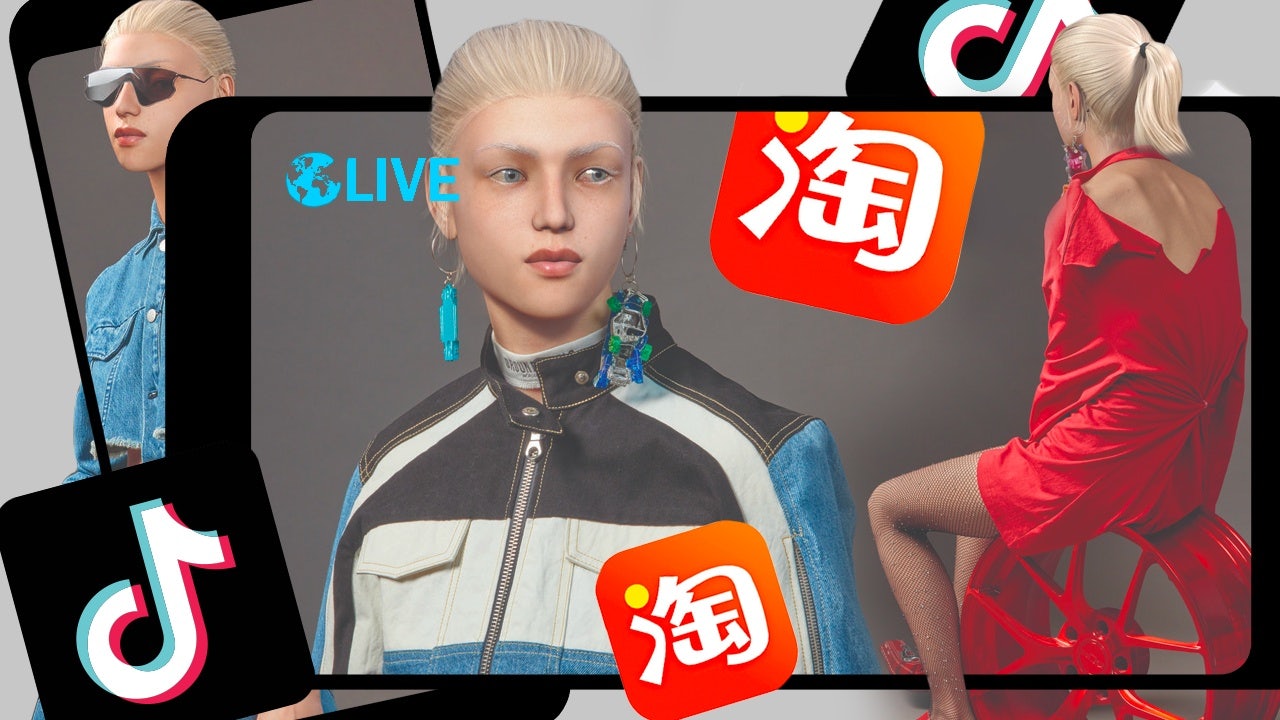In China, social media platforms are currently fighting over the video-sharing realm. Apps are opening channels for users to register themselves as “video accounts” and allowing them to exclusively post videos in the style of the short video app Douyin. Following in WeChat and Weibo’s footsteps, on August 15, Chinese lifestyle app RED joined the video war and officially announced the launch of its video accounts, while providing various levels of support and assistance to its content creators.
The "Research Report on the Development of Online Audio-visual Development in 2019," which was just released by China Netcasting Services Association, has shown that the average Chinese person spends about 38 minutes watching short videos every day. In 2020, China's short video market will reach $8.7 billion (60 billion RMB). And with 5G on the horizon, network download speeds in China will upgrade from the 5M/sec to 500M/second speeds of 4G. Network speeds and traffic will no longer be an obstacle when surfing the Internet, and the short video industry will, in turn, offer greater development potential. For any platform that wants to compete for consumer attention, short videos have become an unavoidable hot spot.
Below, Jing Daily has aligned fashion brand marketing strategies to the attributes and operating modes of the three top video platforms: Douyin, Bilibili, and RED.
Douyin: Down to Earth, but not Low Brow#
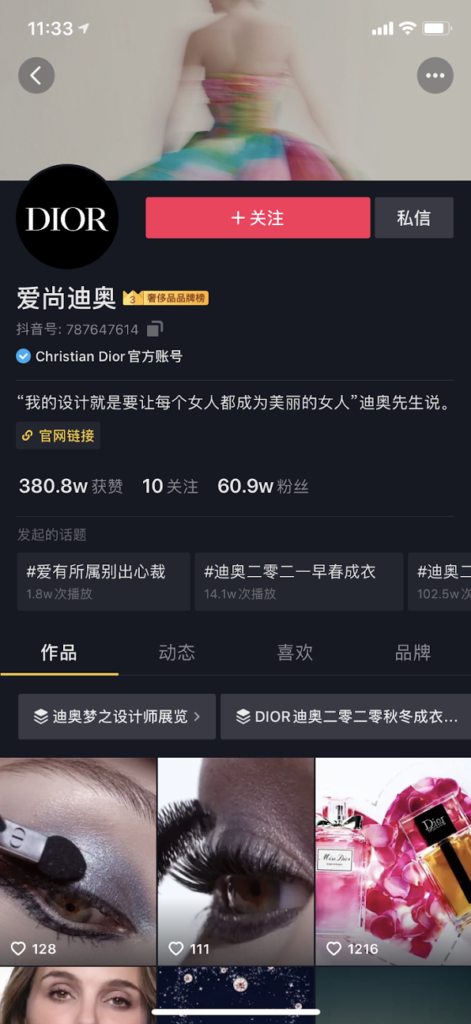
The "2019 Douyin Data Report" that was officially released by the app shows that, as of January 5, 2020, the number of daily active Douyin users has exceeded 400 million. Its female users take up 55 percent of the audience, and male users take up 45 percent. These users are typically between 22 and 35 years old, and users in first and second-tier cities account for 50 percent of the demographic.
On Douyin, videos are mostly within one minute in length, and users can quickly select and switch content by simply swiping on the phone screen. Therefore, the popularity of the video often depends on the first 3 seconds of its viewing. If the content created is not attractive enough, it will be forgotten, eliminated, and left at the bottom of the traffic pool. Douyin experts call this the 3-second rule. Douyin’s short content attribute also means videos must be grounded and easy to understand to receive attention. Having content that’s too sophisticated is often considered counterproductive. Fashion brands should engage in lighthearted interactions with their collaborating celebrities to attract follower attention or else launch Douyin challenges and encourage fans to participate in interactions.
Nowadays, Douyin has become a platform where many luxury brands test the waters in the video-sharing realm. In August of 2018, Dior became the first luxury brand to register an official Douyin account. Prada, Burberry, Fendi, Gucci, immediately followed. In operating Douyin content, many brands simply transfer their usual campaigns to the platform without many modifications, but that results in limited public engagement. Some brands’ account traffic was also restricted by Douyin because the platform limits videos with obvious marketing properties. Content that does not conform to the 3-second rule makes it difficult for these accounts to gain a foothold on Douyin, so it's better for accounts to generate content with behind-the-scenes fashion tidbits and interesting details from the designer's private life to win people’s hearts through the grounded content.
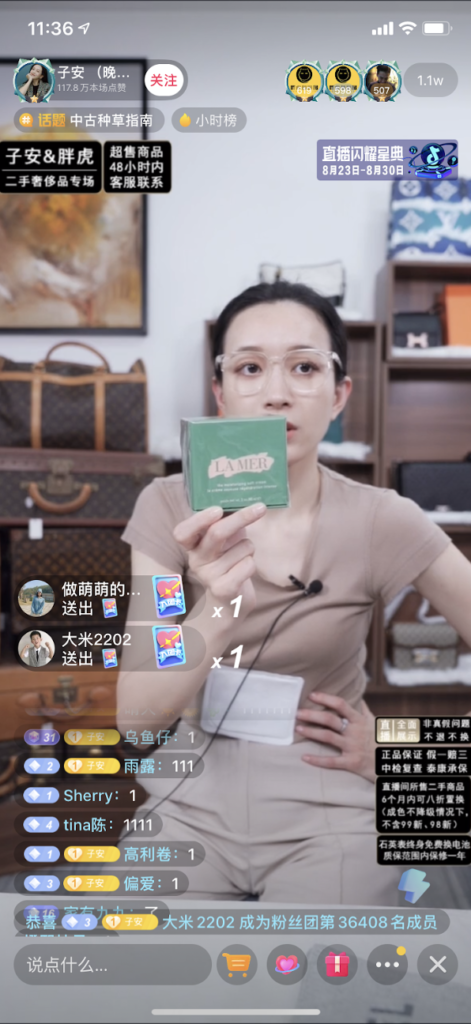
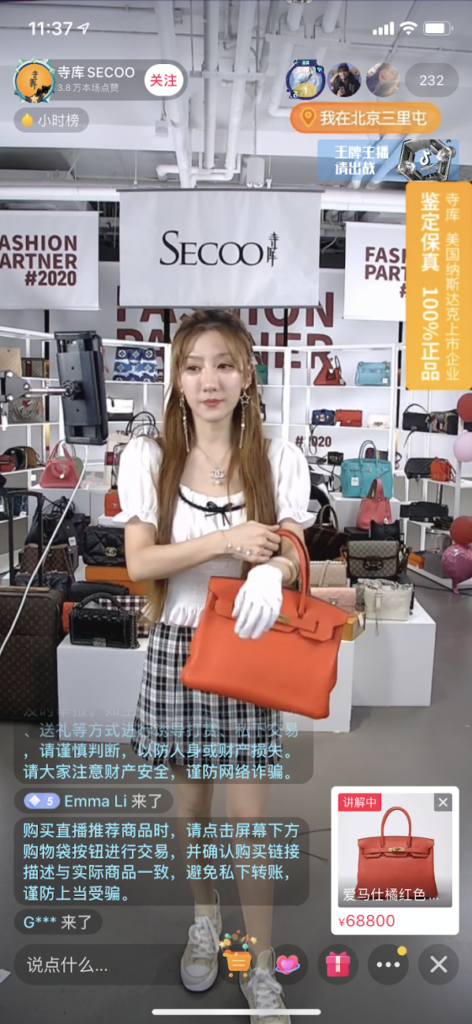
In addition to attracting fans through regular video content, Douyin livestreaming is also a new business opportunity for fashion brands. In the past, luxury brands were often worried about the spending power of Douyin users. However, this problem is streamlined by Douyin’s personally-tailored and recommended user content via accurate algorithms, which is part of a vertical algorithm where users receiving the content present more loyalty. For luxury brands, this has great potential for liquidity.
Meanwhile, the vintage resale market has been growing on Douyin. Many influencers selling second-hand luxury bags, watches, and jewelry are now popular on Douyin due to their short videos. Among them, the vintage bags influencer @Zian, who has 3.15 million followers, sells second-hand luxury bags through Douyin livestreams with average sales of 6.34 million RMB per session.
Some second-hand luxury bags are difficult to buy in the mainstream market, so users are willing to buy them on Douyin, making the conversion rate between ads and sales extremely high. Platforms that specialize in selling second-hand luxury goods such as Aplum, Secoo, and Feiyu have also attracted many followers through the form of Douyin short videos and achieved sales through livestreaming.
Bilibili: In-Depth Content Building Brand Culture#
On August 27, Bilibili announced its unaudited financial report for the second quarter through June 30, 2020. Its average monthly active users have reached 172 million, which is a year-on-year increase of 55 percent. Among them, PUGC (Professional User Generated Content) video viewing accounted for 85 percent of that growth.
"Compared to video platforms such as iQiyi and Tencent, Bilibili does not rely on copyrighted material to compete for users, but relies on the community atmosphere and PUGC creators to compete for users," said Ding Qijun, founder of the Firefly MCN and former product director for Himalaya podcast. He believes that the biggest advantages of Bilibili are its high user stickiness and the higher education of its user background. For him, one thousand followers on Bilibili is equivalent to the quality of 10,000 followers on Douyin. At present, Bilibili platform users generate content of all types, from memes and entertainment to fashion and lifestyle.
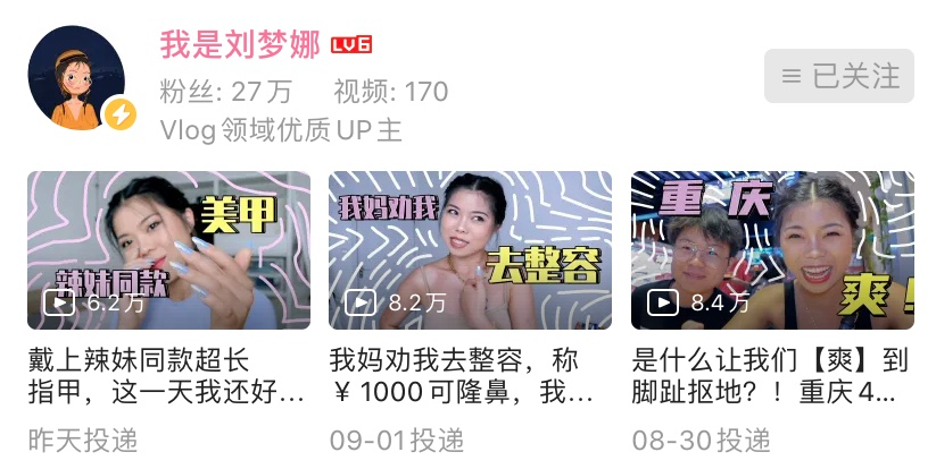
@I am Liu Mengna is a Bilibili account with over 267,000 followers. She believes that the platform has a higher degree of acceptance and diversity of user content. The restrictions on lingerie, gender, and LGBTQ+-related content are relatively less severe. "On this platform, you can show your truest self, not a disguised persona,” she explained. “You become friends with the users.”
Gen-Z Bilibili user Visicy commented on the difference between Bilibili and Douyin, stating, “Bilibili videos are generally longer, so there are a lot of things you can talk about. It’s more in-depth, and higher in quality. Douyin moves too fast; it's superficial and doesn't help me much."
For a long time, Bilibili has been deemed the “Chinese YouTube.” In addition to its in-depth content, the “bullet comments” feature (one-line comments contributed by viewers that float directly above the video you're watching) is also a major attraction. The three commonly used bullet modes are rolling comments, top comments, and bottom comments, and they are important bridges for promoting communication between accounts and their fans.
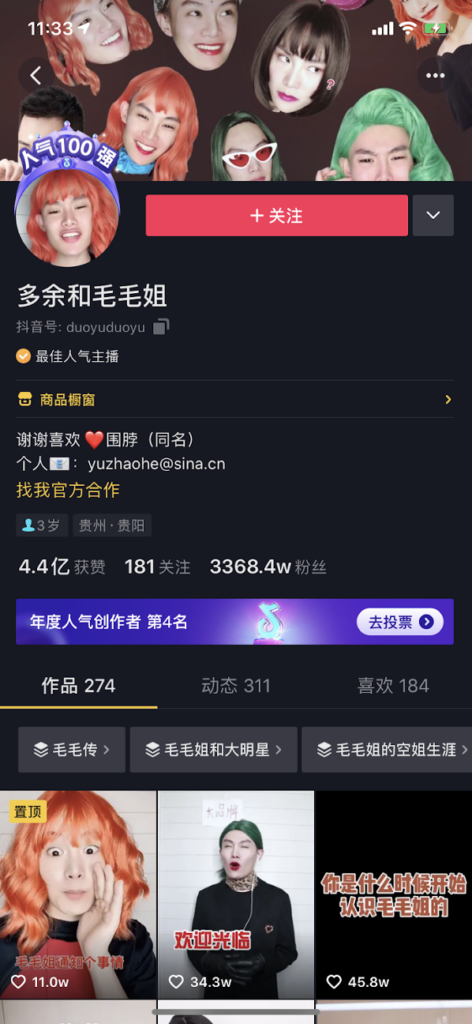

Compared to Douyin, users at Bilibili are pickier with their content, and users are more eager to see in-depth content. @duoyuduoyu(多余和毛毛姐) has 33.7 million followers on Douyin, yet only 72,000 followers on Bilibili for the same content, which is a surprising gap. Fashion brands can communicate with fans by sharing brand stories, designer ideas, show themes, or clothing design inspirations in order to meet fans' expectations of learning about sophisticated content. It should be noted that brands must evaluate the best way to have users accept their content. If they merely copy and paste their campaigns from other platforms, their viewership will be very much limited.
Timo Lei Xiwen, co-founder, CFO, and chief development officer of the MCN Wufeng, believes that in addition to creating a brand platform at Bilibili, brands and influencers should collaborate on their promotions. "If a luxury brand finds it risky to join Bilibili, they should probably stay back and observe some more. But they can filter through Bilibili influencers and choose ones who are in line with the brand's tonality, and their content output can be used to promote the brand."
RED: Building Sound Reputation for Brands#
RED (Xiaohongshu), which has always been deemed more people-oriented, has more than 200 million users as of January 2019. Its users are 90 percent women, with women under 35 accounting for 85 percent, first-tier-city users accounting for 55 percent, and mid-range consumers accounting for 90 percent. This data fully demonstrates the strong consumption power of RED users.
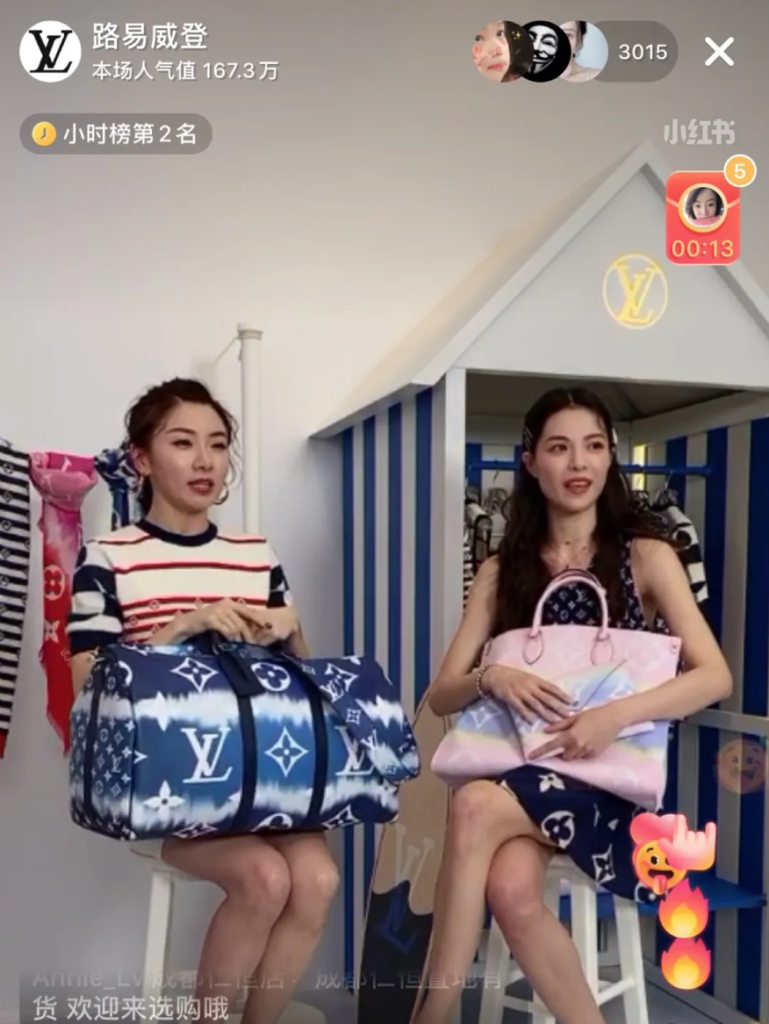
RED was established in 2013 and initially started as a lifestyle platform to help consumers make decisions on purchases. It then launched an overseas shopping community for users to share consumer experiences, which gradually extended to beauty, skincare, traveling, furnishing, and more. In these communities, many of which have been cultivated for many years, users post real reviews for different shopping experiences and inquire about product features. Consumers have also developed the habit of going to RED for survey endorsements of cosmetics, clothing, and other products that they want to buy. No other platform is likely to surpass or even replicate the product-review reputation RED has established in this environment, at least not for some time.
In fact, before RED officially opened up their video account feature, video content had already slowly begun to occupy half of the platform. According to official statistics, from January to June of 2020, the number of videos released by Xiaohongshu has increased by four times, and 97 percent of creators have posted videos. Most importantly, video content can better reflect follower loyalty. Jie Si, the manager for RED’s creation accounts, said that creators who post original videos gain many more dedicated followers.
Although Xiaohongshu, Douyin, Bilibili, and other platforms all have "grass-planting value" (Chinese Internet lingo that refers to the ability for products to gain popularity with shoppers by word of mouth promotion), RED’s ability to liquidate is much higher. Zehao Sun, a sales expert in the vintage handbag market, said, “Many luxury second-hand bags or brand-new bags have much higher sales on RED than on other platforms. For example, RED can sell out Hermès bags, which are at the top of the pyramid, but Douyin cannot really drive these sales.” RED’s selling power is closely related to the trustworthy reputation that community users have built for their products over the years. Therefore, fashion brands should utilize RED as an important platform for winning praise for their products, and, in turn, guiding and attracting users to rationally evaluate different products.
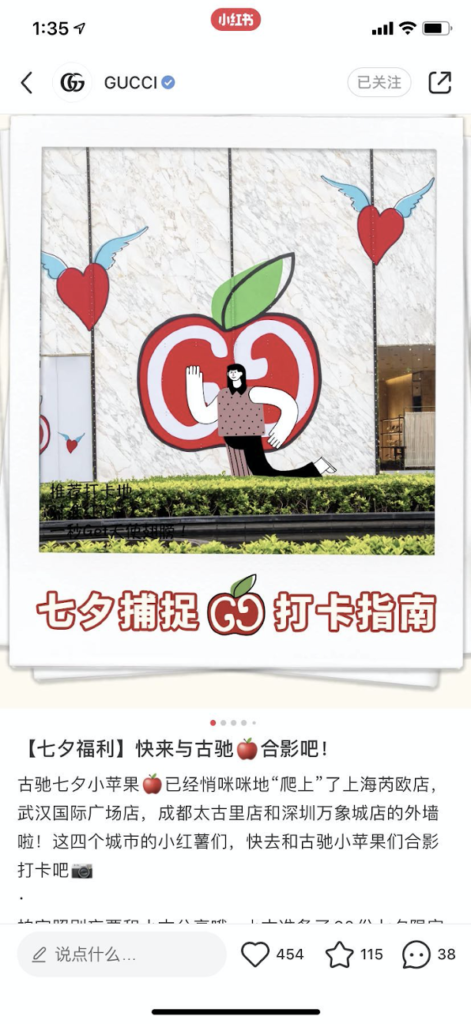
For this year's Qixi Festival (Chinese Valentine's Day), Gucci made full use of the characteristics of RED to promote their new products. To simultaneously drive online and offline traffic, Gucci initiated an interactive call targeting RED users to encourage them to take selfies with wall advertisements at landmark storefronts in Shanghai, Wuhan, Chengdu, and Shenzhen. The brand also cooperated with several RED influencers to run livestreams and released “grass-planting” videos and pictures to introduce Qixi specials, while carefully setting up winning prizes to increase interactions with consumers.
The "McKinsey China Consumer Survey Report" shows that in recent years, more than half of the growth in the global luxury goods market has come from China, and this proportion will reach 65 percent by 2025. Millennials and Gen Zers account for more than 70 percent of the total luxury goods buyers and contributed to about 80 percent of China's total luxury consumption. In China, this era marks a time of "no followers, no marketing" for brands. Jing Daily believes that, in the near future, brands will have to further their efforts on different video platforms to achieve a well-versed in momentum.
